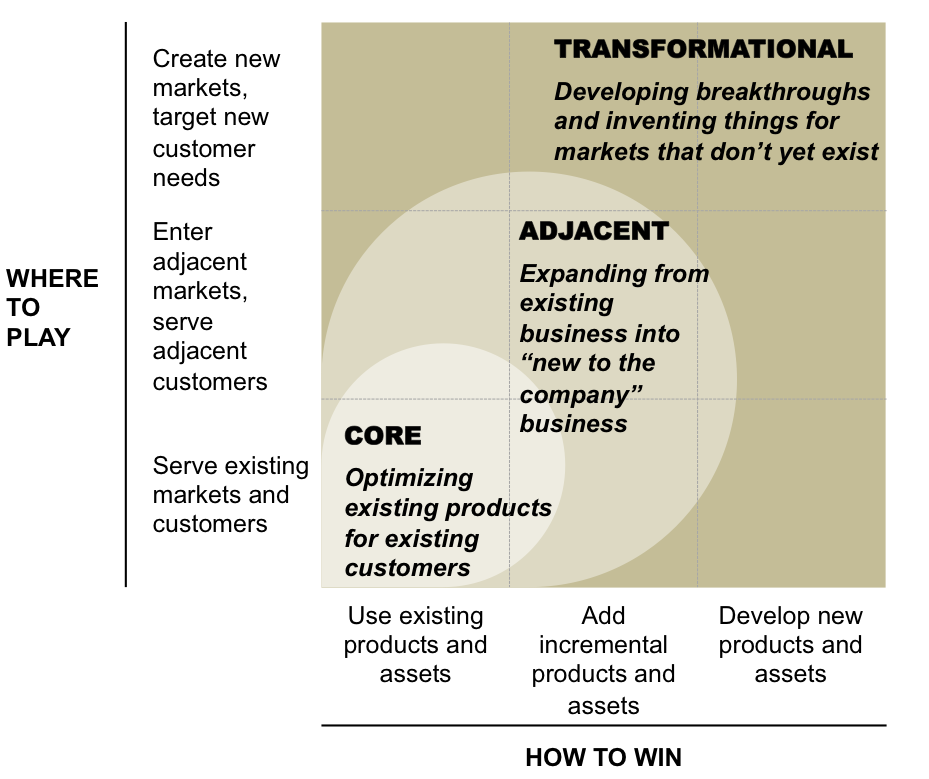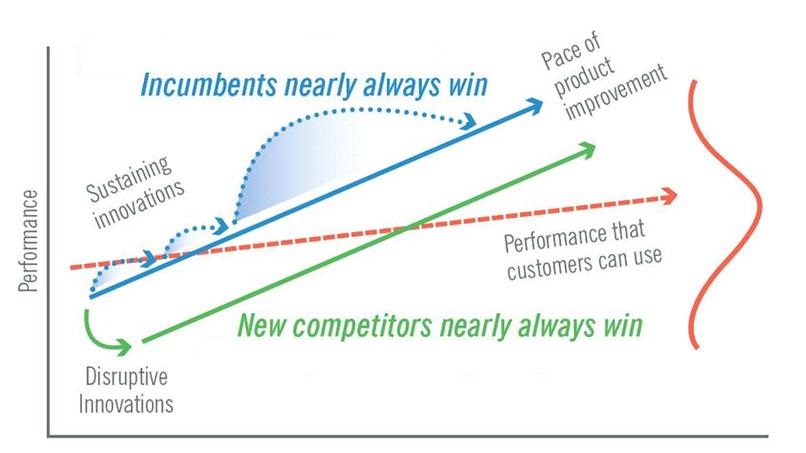The first step of problem solving is to define the problem. Although this may sound trivial, in many cases it is not. Many people and organisations rush in to tackle a problem by finding a solution, without previously knowing that the problem really is. So, to achieve a solution, one first has to fully understand the problem. Once the problems have been clearly defined, the most important factor in solving it is creativity. Creativity is required in order to create a ask the right questions about the problem and find the correct and appropriate answers to them, creativity is necessary in order to provide “out of the box” ideas and suggestions and creativity is what defines the process of finding a new way in doing things. Brainstorming is a very popular way to solve a problem and it is a characteristically creative method. It involves the rapid exchange of ideas, Continue reading
Innovation Management
Types of Innovation and Mapping the Innovation Space
There are different types of innovation. There are four broad categories of innovation. Following these categories are referred as the 4Ps of innovation: ‘product innovation’ — changes in the things (products/services) which an organization offers. ‘process innovation’ — changes in the ways in which they are created and delivered. ‘position innovation’ — changes in the context in which the products/services are introduced. ‘paradigm innovation’ — changes in the underlying mental models which frame what the organization does. For example, the new version of a car, a new bank account offer and a new home personnel computer are all examples of a product innovation. In comparison to a product innovation a change in the production process and machines used to manufacture the car or the home computer these examples are process innovations. Similar the example of the new bank account offer if this came up by changing procedures and sequencing in Continue reading
The Innovation Ambition Matrix
An interesting evolution of the Ansoff matrix, the Innovation Ambition Matrix, coined in an article from Harvard Business Review by two recognized consultants, Bansi Magji and Geoff Tuff, entitled ‘Managing Your Innovation Portfolio’. Innovation Ambition Matrix is a simple six-cell model with the vertical axis concerned with where an organisation is competing (ranging from serving existing markets/customers at the bottom, entering adjacent markets in the middle, and creating new markets at the top end of the axis) and the horizontal axis referring to type of products/assets used (using existing products, adding incremental products, and developing new products/assets). The axes of the matrix are labeled as follows: “How to Win.” This is designated for the novelty of the product that you are offering to customers. Are you using existing, adding incremental, or developing new products? “Where to Play.” This measures the novelty of your customers. Will the innovation serve an existing, Continue reading
Innovator’s Dilemma – Sustaining vs Disruptive Technologies
The Innovator’s Dilemma, the strategic term first articulated in a classic business book, The Innovator’s Dilemma, by the innovation guru, Clayton Christensen of Harvard Business School. It states that a company’s successes and strengths can actually become obstacles when faced with changing markets and technologies. “The innovator’s dilemma [is] that ‘good’ companies often begin their descent into failure by aggressively investing in the products and services that their most profitable customers want.” – Clayton Christensen, The Innovator’s Dilemma. The innovator’s dilemma is the dilemma of recognizing when to respond to technological change in a way that is fundamentally different from that which usually works for large, successful businesses. The dilemma is that of recognizing which of two types of technological innovations are looming on the horizon for a particular industry. The two types of technological innovations are sustaining technologies and disruptive technologies. For each of these, the “threats” posed to Continue reading
Concepts of Windows and Corridors for New Ventures
A window is time horizon during which opportunities exist before something else happens to eliminate them. A unique opportunity, once shown to produce wealth, will attract competitors, and if the business is easy to enter, the industry will become rapidly saturated. Bicycles did not become viable commercial products until people needed them as transportation. When that need occurred, hundreds of bicycle manufactures rushed to take advantage of the “window of opportunity.” Literally every successful product and service has had an optimal period of time for commercialization. Those introduced too early have usually failed, and those introduced too suffered from crowded markets. A brief period of opportunity opened for electronic spreadsheets when micro-computer hit the fast growth curve. Several entrepreneurs entered the market with good spreadsheet products. The first, VisiCalc was designed for the Apple PC. VisiCalc was quite successful, and later versions for Ms-Dos systems were even more successful. But Continue reading
Effects of Innovative Culture on Organizations
Growth creates a need for structure and discipline, organisation changes which can strain the culture of creativity that is so vital to future success. To sustain competitive advantage, companies need to institutionalize the innovation process; they need to create an internal environment where creative thinking is central to their values, assumptions and actions. Management changes and management generally is about implementation. When the managers of an enterprise feel pressured, the fear-driven response is generally to implement better and which generally results doing more of the same only quicker or cheaper. While this is great for doing more of the same, it is still the same and meanwhile everything else is changing — customer’s needs, technology, society, macroeconomics and geopolitics are all changing. Innovation is the engine of growth. It is also a mindset — meaning it is influenced by beliefs, values, and behavior. Company culture therefore has a huge influence Continue reading


